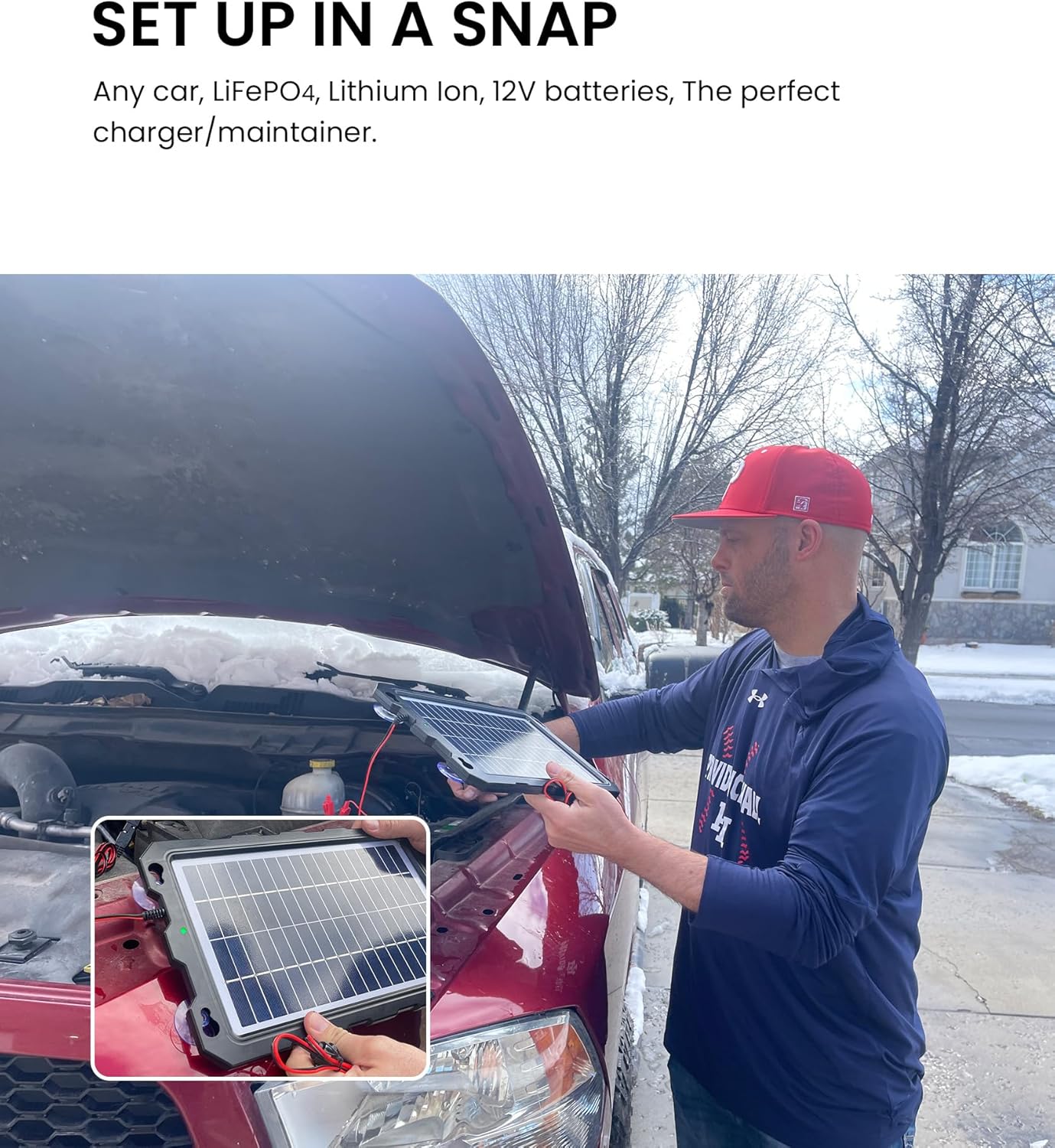Introduction
Can you charge an electric vehicle with solar panels? Absolutely—and it’s not just a futuristic dream anymore. It’s a practical, eco-smart solution for EV owners who want to reduce reliance on the grid, lower their energy bills, and shrink their carbon footprint. Imagine powering your car entirely from sunlight. No gas stations. No coal-powered electricity. Just clean, renewable energy from your rooftop.
Let’s break down exactly how solar EV charging works, what equipment you need, how many panels it takes, and whether the investment is worth it in the long run.
How Solar EV Charging Works: A Simple Breakdown
Step-by-Step Charging Process
Charging an electric vehicle with solar panels involves a series of steps that seamlessly convert solar energy into usable electricity for your car:
-
Solar Collection: Solar panels capture sunlight and convert it into direct current (DC) electricity.
-
Inversion: A solar inverter transforms DC into alternating current (AC), which is compatible with your home and EV charger.
-
Charging the EV: The AC electricity powers your EV charger, which then refuels your vehicle’s battery.
-
Net Metering (If Grid-Tied): Excess power is fed back into the grid for credits, and you can draw power when solar isn’t available (like at night).
Direct Solar EV Charging vs. Grid Offset
There are two main ways solar panels can power your EV:
-
Direct Charging: Some systems allow solar energy to go straight to your EV charger. This requires a smart inverter and EV-compatible hardware.
-
Offset Charging: Most homes use solar to offset total electricity use. You charge your EV as usual, and solar reduces your net usage from the grid.

The Components You’ll Need
To set up a reliable solar EV charging system, you’ll need:
-
Solar Panels (monocrystalline preferred for higher efficiency)
-
Inverter (string or micro-inverter systems)
-
Level 2 EV Charger (faster charging than Level 1)
-
Electrical Panel Upgrades (if needed for capacity)
-
Optional Battery Storage (like Tesla Powerwall or Enphase IQ Battery)
Adding a solar battery allows you to store excess energy generated during the day to charge your EV overnight, increasing independence from the grid.
How Many Solar Panels Does It Take to Charge an EV?
The number of panels depends on:
-
Your EV’s energy consumption (measured in kWh per 100 miles)
-
Your daily driving distance
-
Your region’s solar irradiance (sunlight hours per day)
-
The wattage of each solar panel
Example Calculation:
-
A Tesla Model 3 uses ~26 kWh per 100 miles
-
If you drive 30 miles/day, you’ll need about 8 kWh/day
-
With 400W panels and 5 peak sun hours/day, each panel generates ~2 kWh/day
-
You’ll need about 4 to 6 panels for daily needs
To fully offset a higher mileage or power-hungry EV like a Rivian R1T or Ford F-150 Lightning, you may need 10–15 panels.

Solar Carports and EV Charging Stations
If rooftop space is limited or aesthetics are a concern, solar carports are an elegant and functional solution. These structures not only provide shade and shelter for your EV but also generate energy through mounted solar panels.
Public Solar Charging Stations are also emerging in eco-conscious communities, offering Level 2 or Level 3 DC fast charging powered entirely by solar arrays. These are great for long trips or urban dwellers without home charging access.
The Pros and Cons of Solar EV Charging
✅ Pros
-
Long-Term Cost Savings: After installation, solar electricity is free. Fuel savings can reach thousands of dollars over your EV’s lifespan.
-
Environmental Impact: Zero-emissions charging from a renewable source.
-
Energy Independence: Less reliance on volatile utility rates and fossil fuels.
-
Increased Home Value: Homes with solar and EV infrastructure often sell for more.
⚠️ Cons
-
High Upfront Costs: Solar and charging equipment can cost $10,000–$25,000+ depending on size and complexity.
-
Weather Dependence: Cloudy or snowy climates may require supplemental grid energy.
-
Installation Complexity: Requires planning, permitting, and potentially panel upgrades.
Can You Go Off-Grid with Solar and an EV?
Yes—but it requires battery storage and system over-sizing to ensure sufficient energy year-round. This setup is ideal for remote areas or those seeking total self-sufficiency. However, it’s significantly more expensive than a grid-tied system with net metering.
FAQs
1. Can you charge an electric vehicle with solar panels directly?
Yes, you can charge an electric vehicle directly with solar panels if your system includes an inverter and a compatible EV charger. However, most setups use solar to offset overall electricity use rather than sending power straight from panels to the car.
2. How many solar panels are needed to charge an electric vehicle?
Most EV owners need 6 to 12 solar panels to cover daily charging needs, depending on driving habits, EV battery size, panel wattage, and local sun exposure. For example, driving 30 miles per day might require 5 to 6 standard 400W panels.
3. Is solar EV charging cheaper than using the grid?
Yes. After the initial investment in solar equipment, charging your EV becomes virtually free. Over time, solar charging is significantly cheaper than using grid electricity or gas.
4. Can solar panels charge an EV at night?
No. Solar panels only generate electricity during daylight. To charge at night, you’ll need a solar battery to store excess energy or use grid electricity with a net metering setup.
5. Do portable solar panels work for EV charging?
Technically yes, but they are impractical for daily charging. Portable solar panels produce limited energy and would take days to fully charge a typical EV battery.
6. Do I need a special charger to use solar for my EV?
You don’t need a special charger, but a Level 2 EV charger paired with a solar-compatible inverter maximizes efficiency. Smart chargers can be integrated into solar systems for optimal energy use.
7. Can you install a solar EV charger yourself?
DIY installation isn’t recommended unless you’re a licensed professional. Proper installation requires knowledge of electrical systems, code compliance, and permitting.
8. What’s better: solar carports or rooftop panels for EVs?
Both are effective. Rooftop panels maximize space, while solar carports provide shelter and energy production in one. The best option depends on your property layout and goals.

Final Thoughts: A Bright Future for Clean Driving
Charging your electric vehicle with solar panels is not only possible—it’s the smart, sustainable way to drive. While there’s an initial investment, the long-term payoff is undeniable: lower energy costs, reduced carbon emissions, and a future-proof home energy system.
Whether you’re a daily commuter or a weekend road-tripper, solar-powered EV charging puts you in control—of your energy, your expenses, and your environmental impact
Disclosure: As an Amazon Associate, I earn from qualifying purchases.


